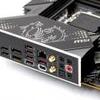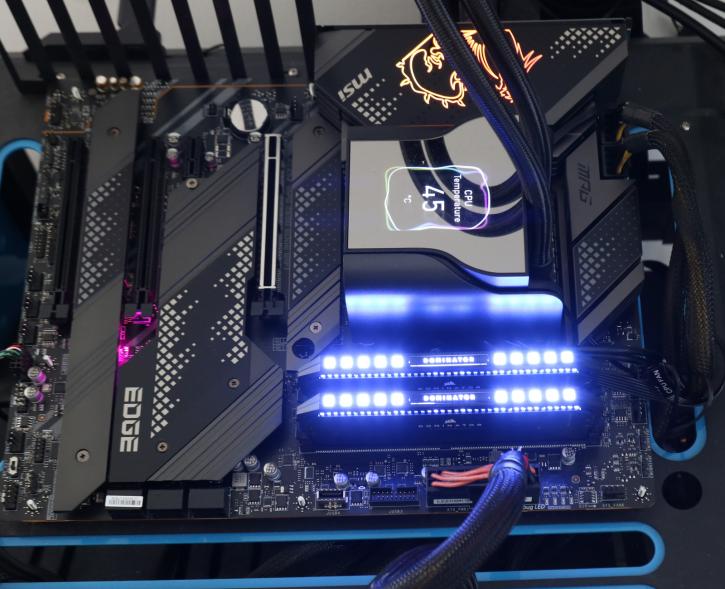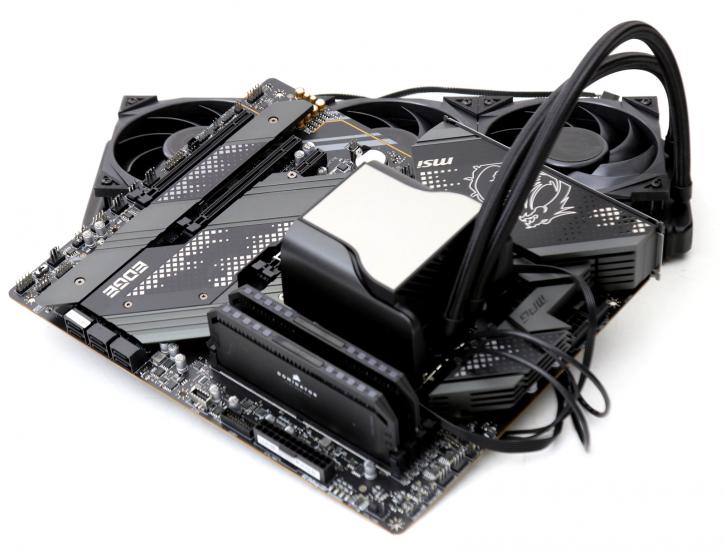Final Words & Conclusion
Final Words
A short while ago we tested the DDR4 revisions of this exact same motherboard. We can already tell you, aside from a few % differences the scores would have been, all the same, however, we tested that DDR4 model with a different processor. ergo we cannot directly compare. However previous articles have already shown the differential between DDR4 3500 CL a8 and DDR5 5200 MHz CL40 is roughly the same. So in that respect, this motherboard is a harder sell due to the DDR5 prices. It is almost baffling to see how close performance is. Regardless of your choice in this matter, the EDGE is a wonderful motherboard, especially for the price.
While we would generally promote DDR5 usage in lieu of DDR4 on Alder Lake, we have to consider the component scarcity, and DDR4 memory surely is cheaper than a 5200 MHz DDR5 kit. In that respect, it can make absolute sense to re-use that DDR4 of yours on a compatible Z690 motherboard in combination with any Alder lake Core 12th gen processor of choice, as really, the differential in between the two technologies currently is petite, whereas you can easily save 50~75 bucks with such a decision. But purely looking at things from a performance point of view, frankly, at this day and age the disparity just ain't large enough ...
Energy efficiency
Added chips, RGB, and BIOS configuration are a bothersome factor when testing stuff like this. the MSI MPG Z690 Edge Wi-Fi DDR4 performs quite well with comes back at 65 Watts power draw in IDLE. Under total stress on the processors, the system comes back at roughly 300 Watts with the flasgshi 12900K processor. Energy efficiency for this motherboard and processors as such are average at best. Keep that in mind with your cooling choice, as processor wattage usually is 1:1 in line with cooling performance. We recommend an excellent LCS.
Noteworthy is that Intel no longer provides a total design power (TDP), instead referring to a 'processor base power' of 125W and a 'maximum turbo power' that is significantly greater. Intel, at the very least for the overclockable K processors, has ended the confusion that the PL1 and PL2 power constraints produced in previous generations with this announcement. The current norm for these CPUs is that they can boost indefinitely unless the PC maker (or, in the case of self-build, the user) decides otherwise to keep within the limitations of the cooling and power supply systems.
Overclocking
We see the same results on all Z690 motherboards we tested; ergo, the limiting factor is the processor and not the motherboard. There are numerous approaches to overclock an Intel platform depending on your objectives. With a Core i9-12900K, you'll achieve roughly 5.1-5.2 GHz across all performance cores. And the proc is going to need something like 1.4 Volts. Most modern motherboards will have an automated setting for that. All eight performance cores were overclocked to 5.3 GHz but at the cost of yet another 125W in energy consumption.
The conclusion
MSI's Z690 Edge Wi-Fi DDR5 is a svelte and fascinating ATX motherboard that migrates away from the mature DDR4 interface and toward the pioneering DDR5 interface. As a result, we have a well-designed motherboard that supports all Z690 platform characteristics. The storage, network, and audio solutions all function admirably. To recap, if you're looking for a motherboard that delivers the performance of Intel's 12th generation microprocessors, this one will not disappoint. We believe that board is an attractive proposition, however, please do keep in mind my DDR4 recommendation, simply put with overall the same performance you can save on some money resuing your DDR4. The EDGE may not be in the ultra-premium class segment of motherboards, but it comes at a reasonable price. Unquestionably recommended.
- Sign up to receive a notification when we publish a new article
- Or go back to Guru3D's front page.




